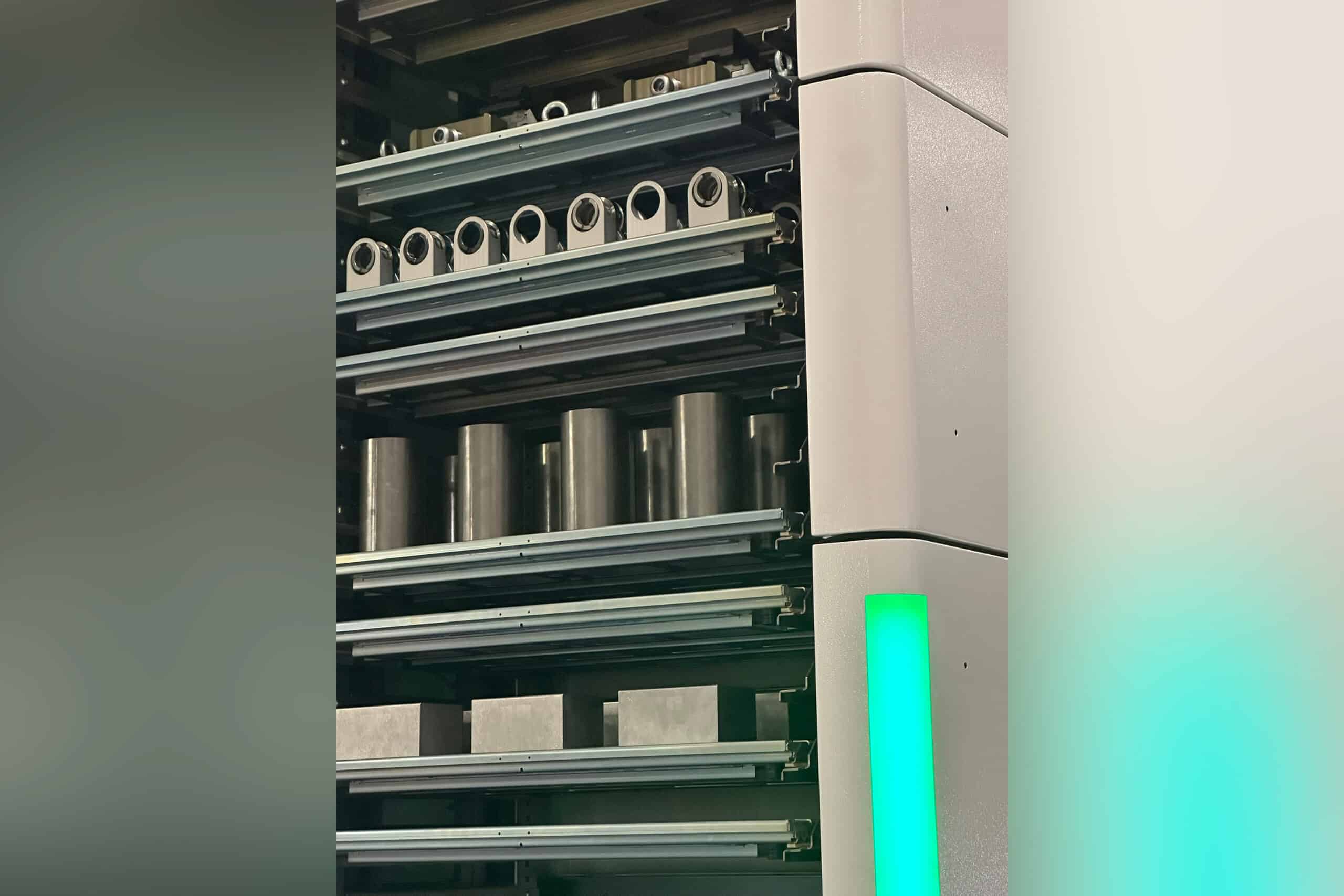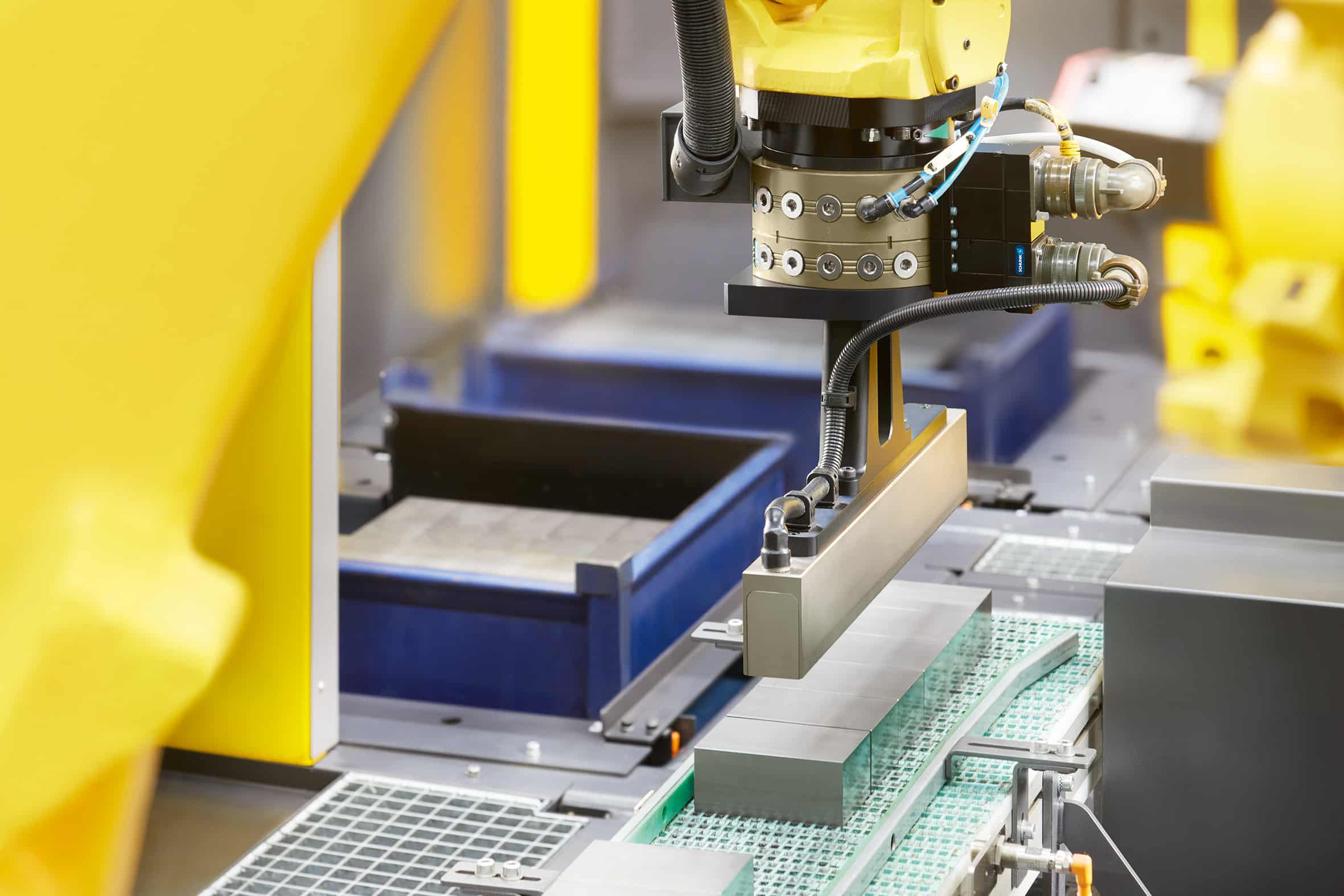
What is the appropriate storage system for your warehouse situation?
The warehouse occupies a key position in every business process. An efficiently organized warehouse increases productivity, reduces costs and prevents employee annoyance. But square meters are becoming increasingly expensive and finding suitable personnel is becoming increasingly difficult, even for logistics positions. Therefore, it is important to make the best use of the available space and allow employees to work as efficiently as possible. So think carefully about the appropriate storage system for your specific application.
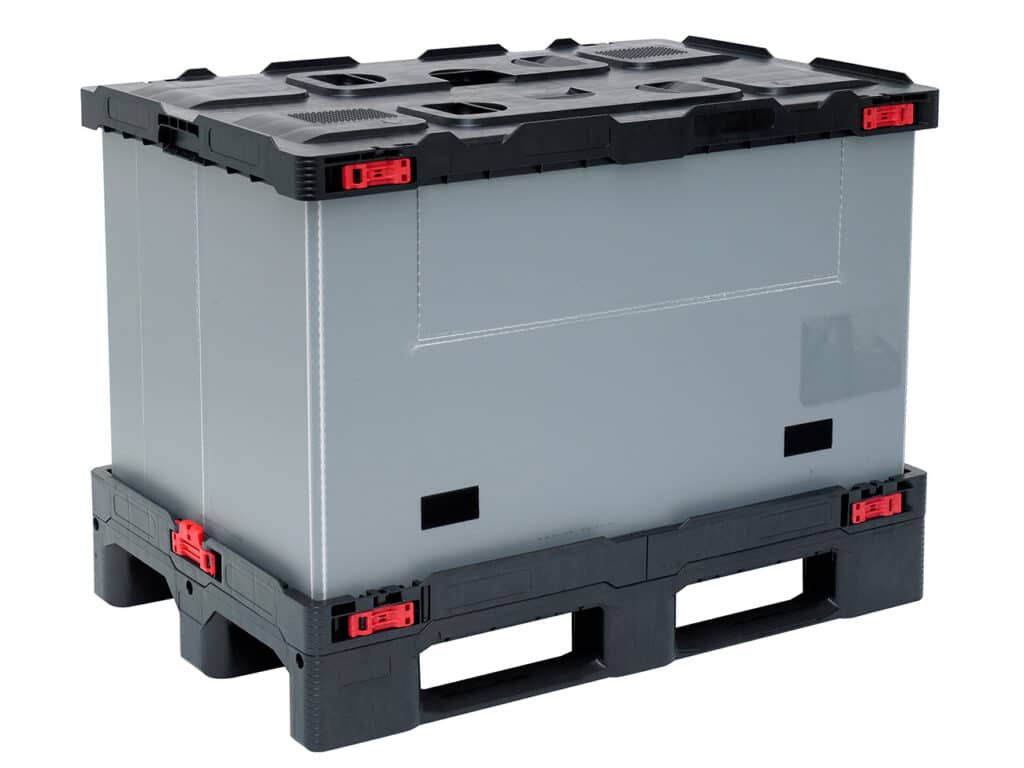
Modern machining centers and technically skilled personnel remain the most important cornerstones for companies to achieve success. However, increasingly stringent requirements in terms of quality, delivery times and prices require investment in other aspects to further optimize productivity and efficiency on the shop floor. Company managers realize that the way raw materials, semi-finished and finished products are stored can play a role in their success story that cannot be underestimated. Those who go too easy on warehouse layout can be deceived: extra handling, unsafe situations for employees... Efficient warehouse layout using appropriate storage systems is therefore crucial, but at the same time no mean feat.
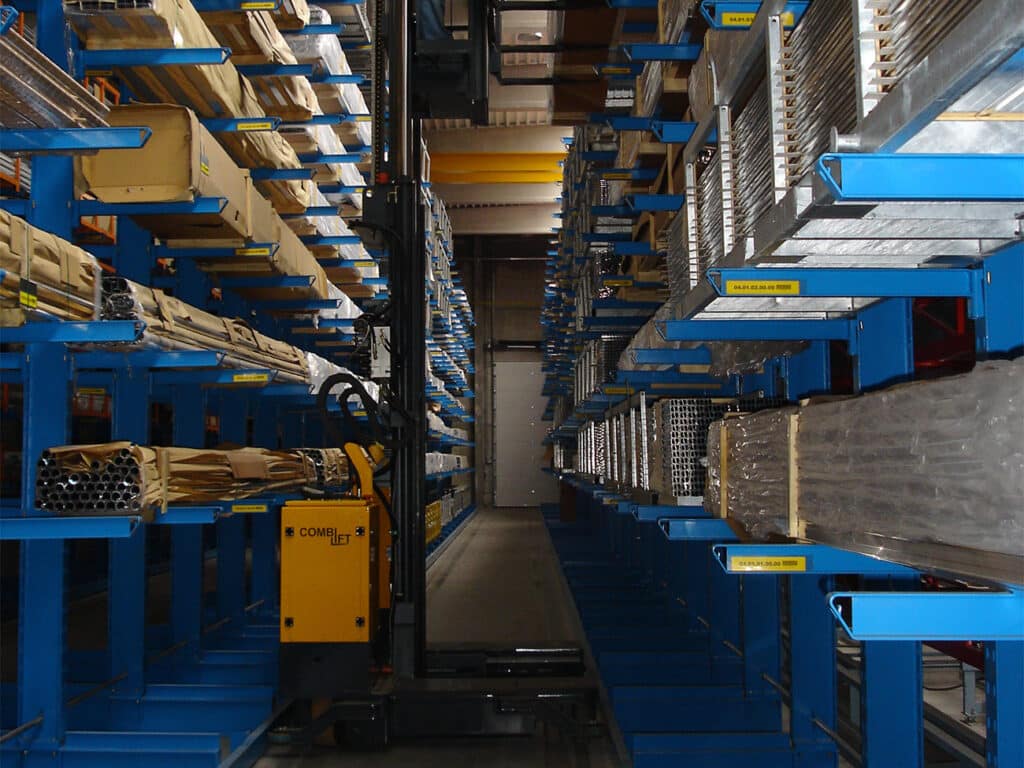
Good preparation bears fruit
There is no standard way to choose a storage system, but there are still several aspects it is best to consider.
Consider what products will be stored and under what conditions, how much inventory you need, what the turnover rate is, and what the best picking and running routes are. Also determine the desired storage capacity in relation to the available storage space. For example, you can choose dynamic solutions, such as automated platform elevators or mobile shelving, which will increase your capacity on the same space.
Furthermore, price remains important, but keep in mind the durability and efficiency of the system in that consideration. It makes no sense, for example, to purchase a cheaper solution that you know will not cover the load for your application in the medium term.
Based on all these aspects, you can create a concrete layout plan, with the appropriate storage systems: pallets, stacking racks, wire containers, roll containers, racking, platforms or entresols, warehouse elevators, semi-automatic shuttle systems, fully automated high bay warehouses...
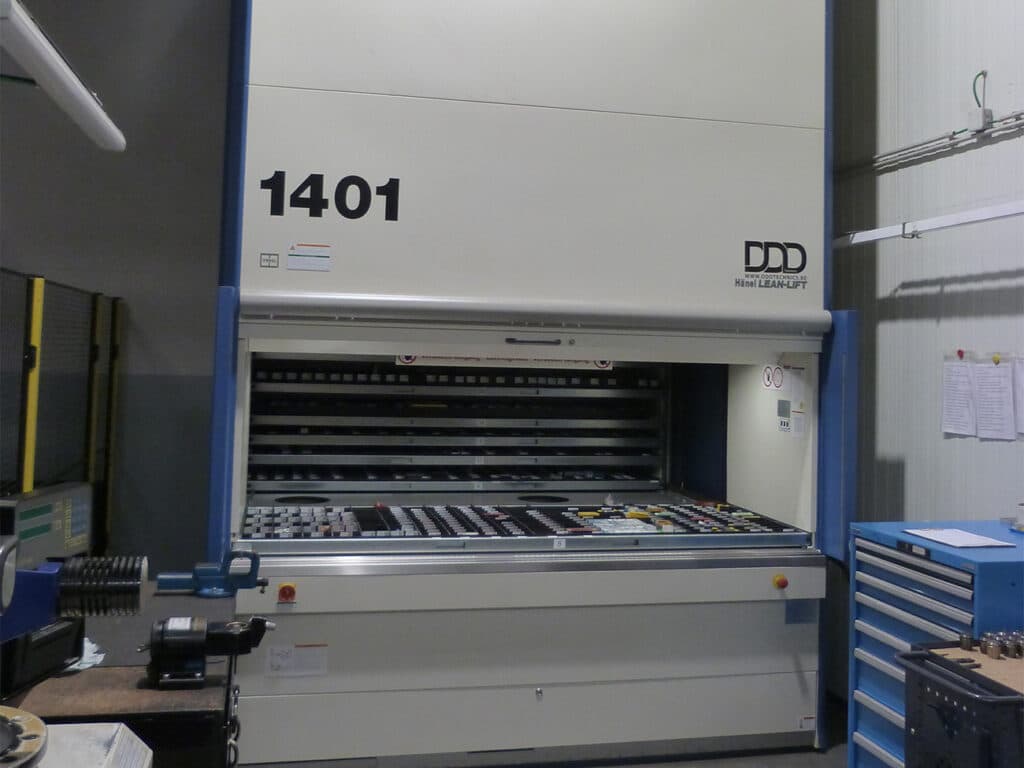
From simple to fully digital
Those who like to keep things simple automatically choose the load carrier, which is still the most widely used in the logistics world today: the euro pallet. Of course, pallets are available in the most diverse formats, and in addition to the traditional wooden pallet, you can also use load carriers in durable plastic.
Depending on the goods, choose an appropriate solution: storage bins and tool bins, stacking bins, mixing bins, Euronorm crates and pallet boxes, waste containers and sorting bins, drums, jerry cans and intermediate bulk containers (IBC)....
These can also be special containers for critical parts, such as elements with surface treatments that are best not in contact with each other.
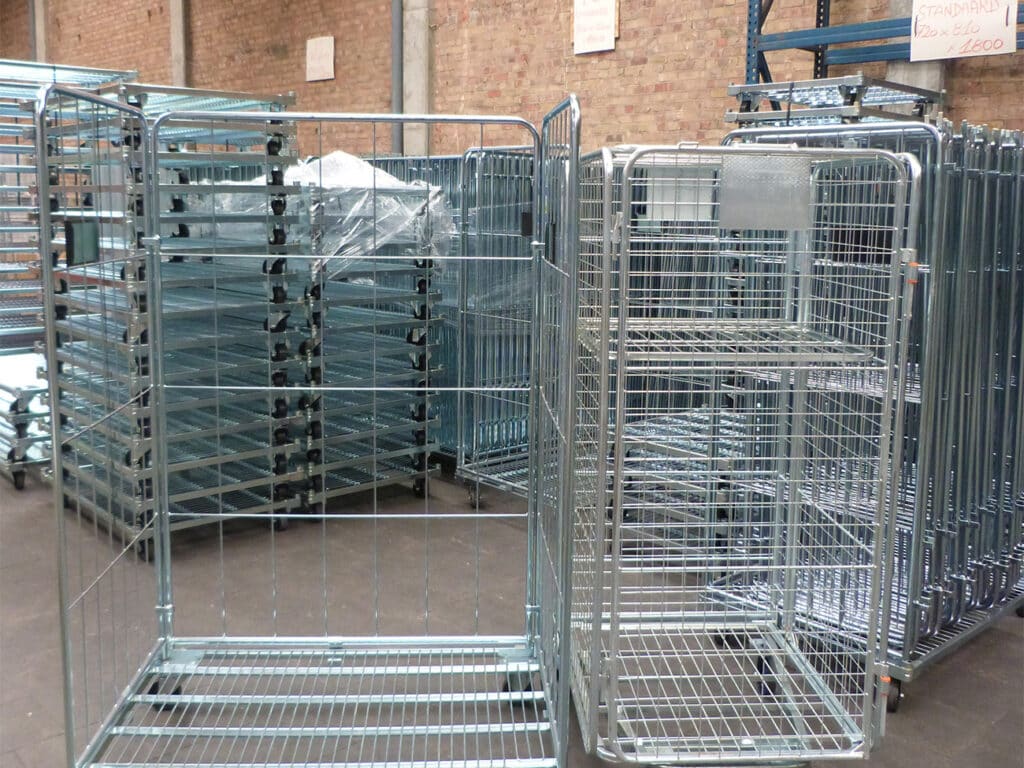
Stacking racks, wire containers and roll containers
If you are looking for a storage system that can also be used for direct internal or external transport, it is best to invest in stacking racks, pallet attachments, wire containers or even roll containers.
The latter are multifunctional, safe and easy to use. You have a choice of nestable, demountable and fixed models, built from a robust metal chassis with two fixed and two swivel wheels (with or without brakes) and two side rails. Depending on the type, they are available with rear gate, half-folding head gate, roof, lockable door(s), intermediate grilles, and optional elements such as straps, identification plates, special bottoms... There are also special versions, such as laundry containers, anti-theft containers or order picking trolleys.
Theses
Versatile warehouse racking is available for storing small goods, bulky goods and pallets.
For example, pallet racks are now indispensable in internal logistics. They are space-saving and you can store different types of pallets or other load carriers in them.
Of course, there are also many other types of racking: cantilever, shelf, roll-over and mobile racking... These racks can be expanded into an automated high-bay warehouse or a channel warehouse, where several storage units are placed one after the other and the goods are stored and retrieved using so-called shuttles.
For some applications, for example for metal sheets, tubes and profiles, racks with roll-out drawers or sheet magazines are more suitable. With these, the goods are completely outside the racking and can thus be easily picked up and transported manually or directly with the loading crane or bridge.
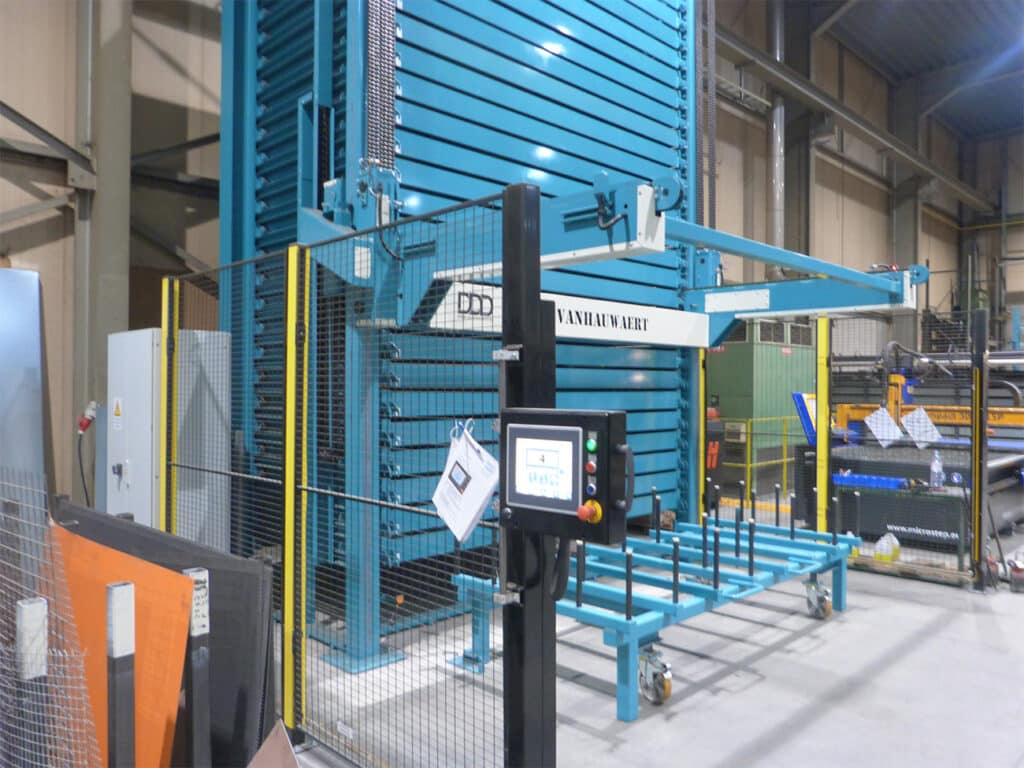
Flooring
A mezzanine floor, also called a mezzanine, platform, storey floor or mezzanine floor, doubles the area of the room in one fell swoop and is used for a variety of applications.
Some firms want a platform floor that is enclosed to store products safely and under lock and key, but is also demountable to put back up somewhere else. Other firms want a platform to use as an additional space for canteen, archive, even office or meeting space. For racking systems with mezzanine floors, platform aisles can also be built in between the racks or even complete floors can be mounted on the racks.
Automated platform and warehouse elevators
The paternoster system, along with platform elevators, is still a widely used solution to make maximum use of the available height of a room and store parts optimally without losing space in height. A warehouse elevator uses carrier sets, while the platform lift systems are equipped with different platforms for the storage of goods.
Both solutions automatically bring the requested article to the work opening within seconds. They can be used as stand-alone units, or the warehouse can be incrementally enlarged with more modules, even combined over several floors.
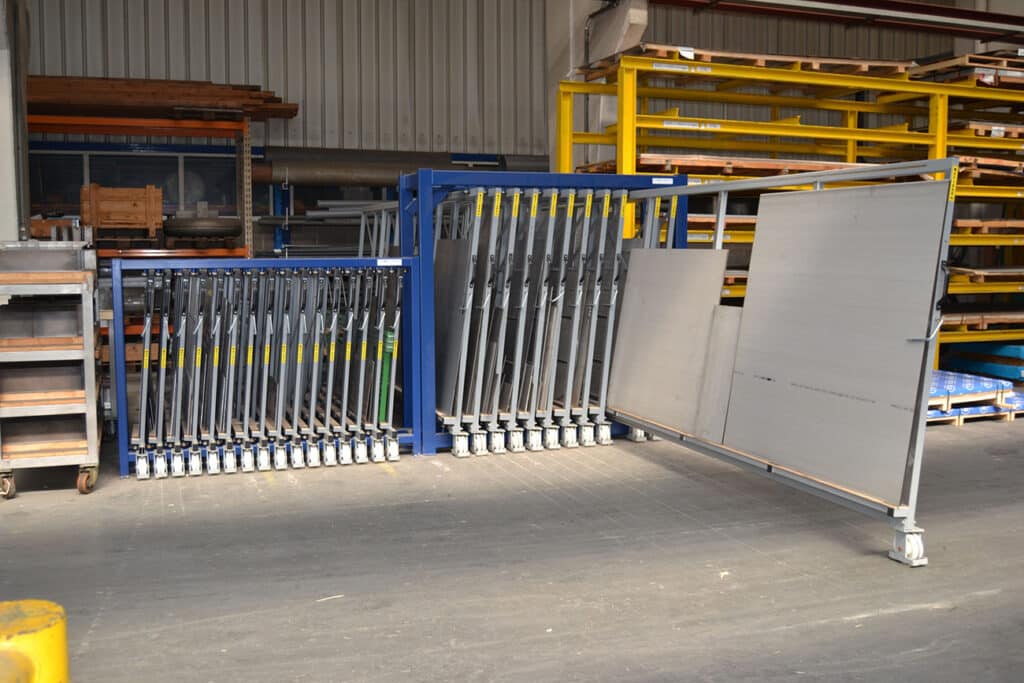
Conclusion
Those who want to organize their warehouse space should think very carefully beforehand about the appropriate storage systems. It may be a good idea to involve the people on the shop floor in this process, because they know better than anyone else what the requirements are and where potential problems may arise. The combination of a correct storage system with well thought-out walking and picking routes, the right transport systems and possibly a software for smart inventory management will finally ensure increased productivity and efficiency.

